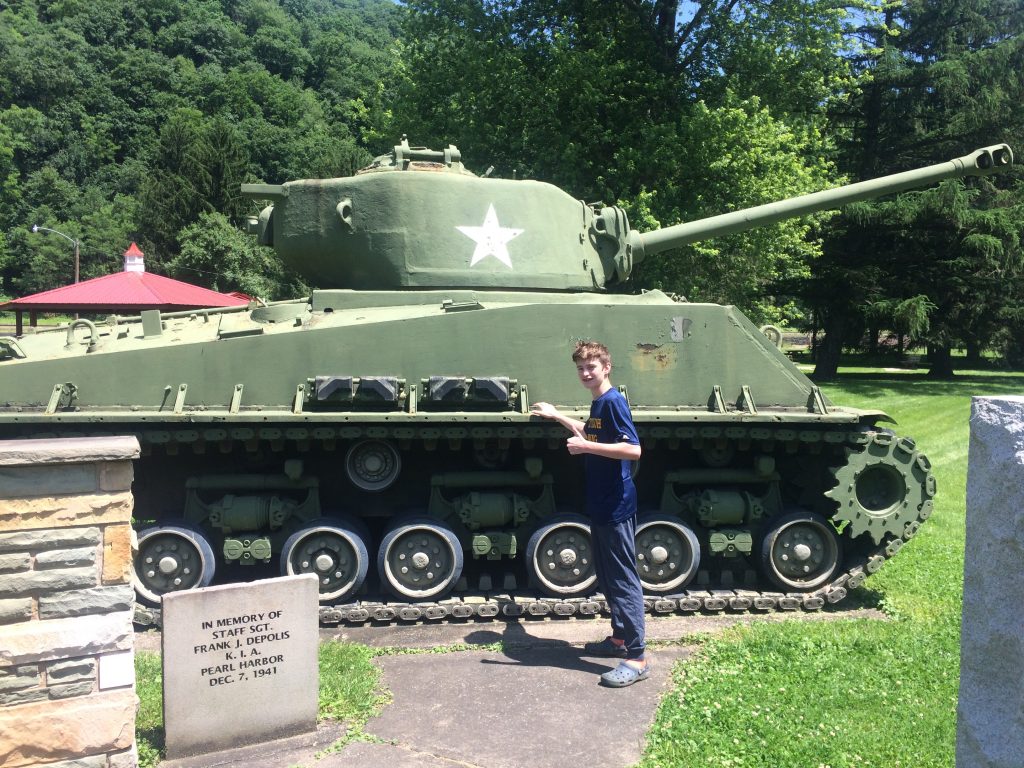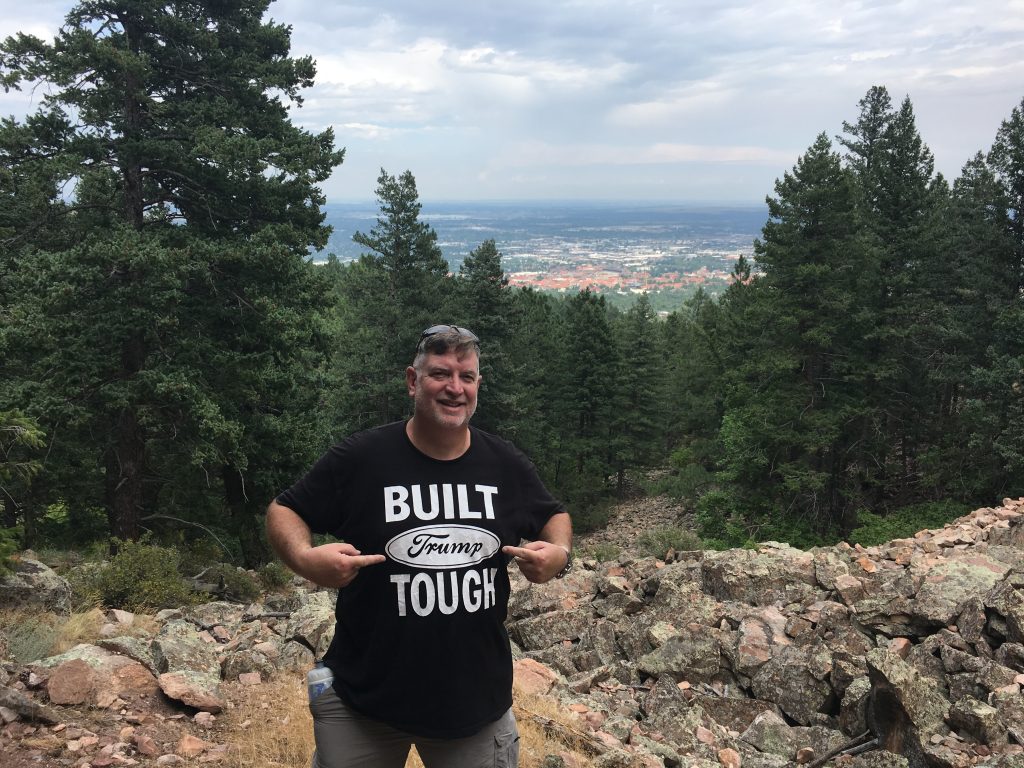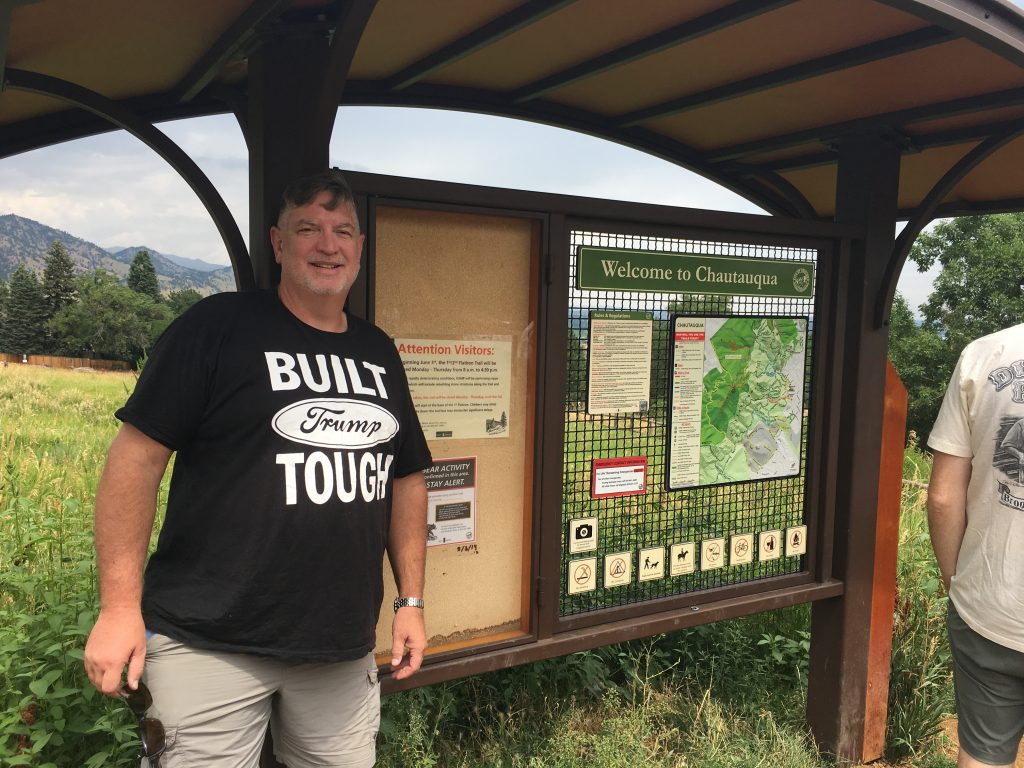Posts Tagged → boulder
Colorado shooting is another “Gun Free Zone”
Another crazy guy (and it’s almost always a guy, why is that) walks into a store and shoots innocent people just going about their business. So far ten people are dead, among them a local police officer doing his duty to protect and serve.
Colorado is a western state, with a strong history of cowboys, self-reliance, and private gun ownership. Especially carrying a sidearm for personal protection kind of gun ownership. Across most of Colorado a person can expect that a great many people around you are carrying a concealed firearm, for their own protection and for yours.
But in recent decades, beautiful western states like Colorado and Montana have seen an influx of Californians fleeing the disastrous policies of otherwise-beautiful California. But these refugees bring with them the same failed mindset and foolish policies they fled and had left behind in California. Slowly but surely, these transplants begin working to implement the same exact laws, policies and regulations that are even now destroying California. And where would these liberal transplants focus most? Why gun elimination, of course.
Boulder City in Colorado is the poster child for liberalism or woke-ism run amok, and every type of Marxist regulation and ordinance possible can now be found in Boulder, in an otherwise pretty free state of Colorado. One of the things that most of the Boulder residents really don’t like is guns, or gun ownership. And so, the store in which yesterday’s mass shooting occurred fell in line and had a “Gun Free Zone” warning on its front door.
When a store posts this kind of warning on its door, it usually means that anyone carrying a firearm on the premises could be subject to criminal charges. And so those people who do carry a concealed firearm almost always avoid these kinds of stores. I suppose they would rather be safe than sorry, and so they shop elsewhere.
So, who or what kind of person ignores the “Gun Free Zone” sticker or sign on the store front entry? Well, it just might be a crazy person, like yesterday’s shooter guy. People looking for soft targets can and often do target places where they reasonably expect to encounter little or no armed resistance.
What would have been the outcome of his attack, had there been several patrons in the store that day carrying firearms? Do we think the result might have been different, as the result has been different in other places where “a good guy with a gun” managed to stop the assault as it was beginning?
Gun Free Zones do not work. They are infantile make-believe wishful thinking that all bad things would just go away. Yes, Gun Free Zones are the equivalent of a #badthingsjustgoaway mindset, which is not a grown up, mature, contemplative way to approach reality. But apparently, so many Americans have experienced so little reality or real life challenge that they actually believe this kind of weak policy works. This childish mindset is at the core of the gun confiscation movement: “If we can just get rid of guns, then there will be no more bad things.”
Which is of course nonsense, because after all the known guns are eliminated, then the unknown guns held by bad people will come out. And American society will become a shooting gallery, because no one but a police officer here or there will be around to stop the carnage.
If you doubt this prediction, just look at this Colorado store. There is your Gun Free environment right there. A real effective policy, right? A real peaceful, safe place, right?!
UPDATE: Turns out the murderous lunatic is another peace-loving jihadi named Ahmad Al Aliwi Alissa, from Syria. Turns out America doesn’t need gun confiscation or regulation, we need immigration control.
Public Lands: Public good, public love
Someone named this September “Public Lands Month,” and while I have no idea who did this, or why they did it, I’ll take it nonetheless. Because like the vast majority of Americans, I totally, completely, absolutely love public land. Our public parks, forests, monuments, recreation areas, and wildlife management areas are one of the greatest acts of government in the history of human governments.
As a wilderness hunter, trapper, and fisherman, I truly love the idea of public land, and I love the land itself. No other place provides the lonesome opportunities to solo hunt for a huge bear or buck, either of which may have never seen a man before, or to take a fisher and a pine marten in a bodygripper or on a crossing log drowning rig, than public land.
If you want a representation of what is best and most symbolic of America, look to our public lands. They best capture the grandeur of America’s open frontier, the anvil upon which our tough national character was hammered and wrought. It was on the American frontier that Yankee ingenuity, self-reliance, and an indomitable hunger for individual freedom and liberty was born. And yes, while it was the Indian who reluctantly released his land to us, it was also the Indian who taught us the land’s value, so that we might not squander it, using it cheaply, profligately, and indiscriminately. Public lands are the antidote to our natural inclination to use land the same way we use everything else within our reach.
Some armchair conservatives argue that our public land is a waste of resources. That it is a bottled-up missed opportunity to make even more-more money, and if only we would just blow it all up, pave it all, dam it all, cut it all right now, etc, then someone somewhere would have even more millions of dollars in his pocket, and daggone it, he really wants those extra millions on top of the millions he already has in his pocket. When all our farmland is paved, that same armchair conservative will have nowhere to grow food to feed us, and apparently he will learn to eat dollar bills (he already thinks Dollars are what we survive on, anyhow, so it’ll be an interesting test of reality meeting theory).
But the truth is it’s mentally sick to talk about how much money you can get for selling your mother, or for selling your soul, which is what our land is, take your pick. Hunger for more money than a man knows what to do with, notwithstanding. But some things are just not worth valuing with money, and no number of payments of thirty pieces of silver will ever, ever amount to anything in comparison to what is actually in hand, our public land.
Others complain that public land is communism, but what do they say about the old English and New England commons, where villagers pastured their collected cows? Were our forebears who fought at Bunker Hill fighting for communism? You know they weren’t. Sometimes sharing isn’t a bad thing, and sharing some land is probably one of the best things. If Yosemite or Sequoia National Parks were privately owned, no one from the public would be there, right?
Americans are fortunate to have in their hand millions of acres of public land that they can access, from Maine to Alaska to Hawaii and everywhere in between. Little township and county squirrel parks, big state forests and parks, and vast national parks like the Appalachian Trail and Acadia are all magical experiences available only because they are public.
It is true that LaVoy Finicum was murdered in cold blood by out of control public employees over a legitimate debate with tyrannical, unaccountable public land managers in Oregon. But that is not the fault of the public grazing land there, any more than a murder can be blamed on the gun and not the man who pulled its trigger. We need to hold accountable those who screwed over Finicum and those who murdered him, not blame the land on which it all happened. Despite some failings by public land managers, of which Finicum’s murder is a great and sad example, public land remains one of the very few things that government actually does well and right almost all of the time. Corrective action is just one new administration away, as selected by the voters.
If you want to see untrammeled natural beauty for campers and hikers, or if you want to experience bountiful hunting lands for an afternoon or a week, then look to the public lands near you or far away from you. Everything else – nearly 100% of private lands – is either dead, dying, or slated for eventual execution at the hands of development.
We need a lot more public land in America. We need more to love in life, and nothing compares to loving a whole mountain range, a river, a field or a forest. It will love you back with nurture and sustenance, too.

Hang glider leaps off of Hyner View State Park, surrounded by a couple million acres of Pennsylvania state forest and state parks

Down below Hyner View State Park is the Renova (Renovo) municipal park, with some historical artifacts from past freedom-ensuring conflicts, reminding the next generations of the sacrifices made so they can enjoy iPhones and Starbucks

Yours truly standing high up in the Flatirons above super-liberal Boulder, Colorado, in the background, demonstrating “Trump Over Boulder” in case any hikers had missed the shirt. None had missed its presence there, by the way. Lots of public land here, enough for everyone to share, even Donald Trump! (and yes, there are a lot of boulders here in the photo).

The author malingering around the Boulder, Colorado Chautauqua kiosk, silently taunting the invasive liberals gathered and passing through there. And in fact, the Trump shirt earned many double and triple-takes from fellow hikers, unused to experiencing diversity of thought. I did not bite those people, though I was tempted. Great public lands experience!
Friends in low places
Several years ago several ambitious construction projects were begun, where the building material would come from our own oak trees on our property. Oak may not be the best or easiest building wood, because when it dries it is heavy and as hard as iron, and thus tough on tools and shoulders alike, but it is what we have there.
So oaks were cut, skidded, piled, and then milled in situ over about a five year period. An injury and subsequent surgery prevented me from continuing this remote effort, which then moved forward in fits and starts over several years. When we finally got around to completing the actual projects, much of that beautiful oak had been sitting out for a long time, and in some cases too long. After using up much of that oak lumber, a large amount yet remained in piles, where it had air dried.
Last week was my final drive to get under roof thousands of board feet of two-inch-thick oak boards, heavy beams, and smaller posts, before they started to rot. It was a lot of work. The unusual heat and blazing sun made the work go slower. One thing that surprised me was the absence of mice living in these outdoor piles. Normally mice run and scurry as the wood is moved, having nested among the boards in perfect little hidey holes.
The last pile of drying lumber was finally put away, with just a few boards remaining at the very end, butted up against a huge boulder that makes up part of a stone wall around the yard. As I dismounted the tractor, stepped over to the board ends, and reached down to grab them, a sound caught my attention.
It was a sound that set off primitive alarm bells in my brain.
At first it sounded like a cricket, and then a grasshopper, and then a second later my mind concluded it was a timber rattlesnake. After stepping back, well, let’s say it was an inelegant, well, ugly (it’s a big fat man jumping, after all) leap, minus my usual little girl scream that seems to accompany most of my unplanned and close-up rattlesnake encounters, I looked down.
A long black snake with a yellow diamond pattern was stretched out next to the boulder, about six inches from where my boot heel had settled moments before. The long grass against the boulder had concealed the snake from my eyes, which, frankly, had not looked there, but had rather been focused on the heavy boards, and how I was going to pick them up and manhandle them to their destination across the yard.
The snake’s angular head and erect tail with rattles confirmed it as a timber rattlesnake.
While it was not a huge male rattler, the likes of which I have caught and moved to safety off of roads and trails a number of times since I was a kid, it was nonetheless big enough to permanently remove a chunk of leg muscle. So I admired it for a minute, and then went on to other work elsewhere. When I returned an hour later, it was gone, though I thought I could see it coiled up right under the boulder’s edge. Instead of reaching down with my hands, I used the pallet forks on the tractor to pull out those last boards.
Over the course of the next two days, my mind kept replaying the encounter. In July 2001, when we had owned the property for seven months, DCNR forester Jim Hyland and I had scoured our property, as well as the adjoining State Forest and part of the adjoining private land, looking for rattlesnakes. That day we found a corn snake, a garter snake, a ring neck snake, and two green snakes. No sign of rattlesnakes among the rock and old slate quarries up high. Not even a shed skin.
So for sixteen years we had enjoyed our property without being mindful of rattlers. Our children had been born and raised around the cabin, running freely around the property. Sure, I spent a lot of time in our woods, a certified Tree Farm, and I have always been on the lookout for rattlesnakes, as well as other snakes, but I had seen few snakes at all, and never a rattler.
Snakes are awesome, they are awesomely cool creatures. I bear them no animosity whatsoever. In high school and college a pet boa constrictor kept me company, until she had grown so large that she was regularly breaking out of her cage and hunting our house cats. When I last saw her, she filled up one side of the man’s living room, and he regularly fed her rabbits and squirrels he trapped in his yard. She weighed about 150 pounds then, and was ten years old. I hugged her, but she just laid there, limp and dozing. Snakes…what can you do? Love em the best ya can.
And so now I am confronted with the fact that a potentially dangerous animal shares our camp with us. All around us we have seen rattlesnakes over the years, mostly run over by cars down on the highway, and increasingly I see them all over central and Northcentral Pennsylvania while cruising timber and looking at land. At some point I did expect them to join us as tenants of one sort at the cabin. Under the front porch is where I thought they would first show up, because it’s good cover and the mice like it there. Struggling emotionally to adjust to this new arrangement has not been painful, but it has been harder than I thought it would be.
The absence of mice under the wood piles reminded me why I accept and even welcome the presence of timber rattlesnakes, intellectually if not emotionally. Mice are a major pest, and they are destructive little bastards. Hearing them chirp and run inside the walls of the cabin at night, right next to my bed, is a source of aggravation. When they eat porch and barn furniture for nesting material, it is infuriating. They pee everywhere, and it stinks. We regularly trap them around the buildings and poison them inside the barn. Help reducing their numbers is most welcome, and anyone or anything that helps achieve that goal is a friend of mine.
Timber rattlers are beautiful to look at, and they are normally pretty docile, requiring a lot of pestering and rough handling to elicit a strike. But like all wild animals they are unpredictable, and the risk they pose to little kids playing outside is significant. Fortunately, our kids have reached ages where they can think carefully for themselves, consciously avoiding areas where rattlers would naturally congregate. And we now infrequently host families with little kids as guests, as most of our friends have kids the same ages as our own children, able to take guidance, if they are with their parents at all.
So the risks versus the benefits works out in our favor. The benefits of rattlers sharing our property are high, because they eat the hell out of mice. Rattlesnakes are my new friends, in low places, where they are needed most.
Welcome, friends.